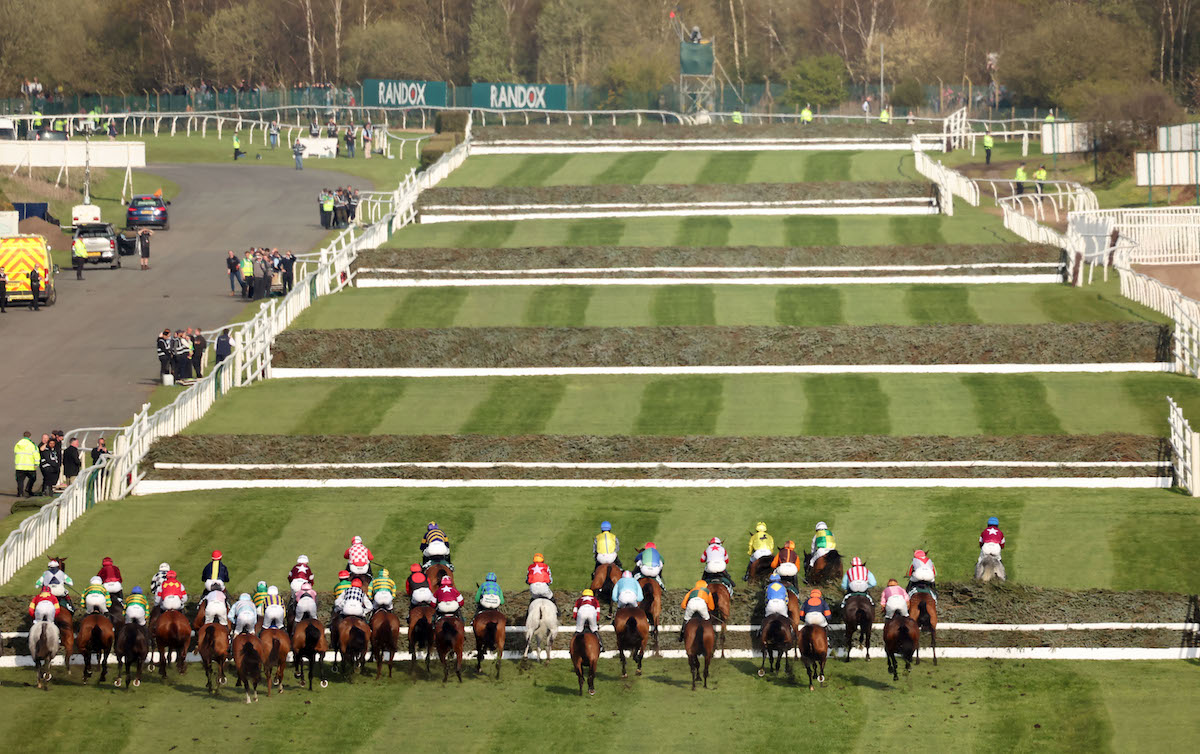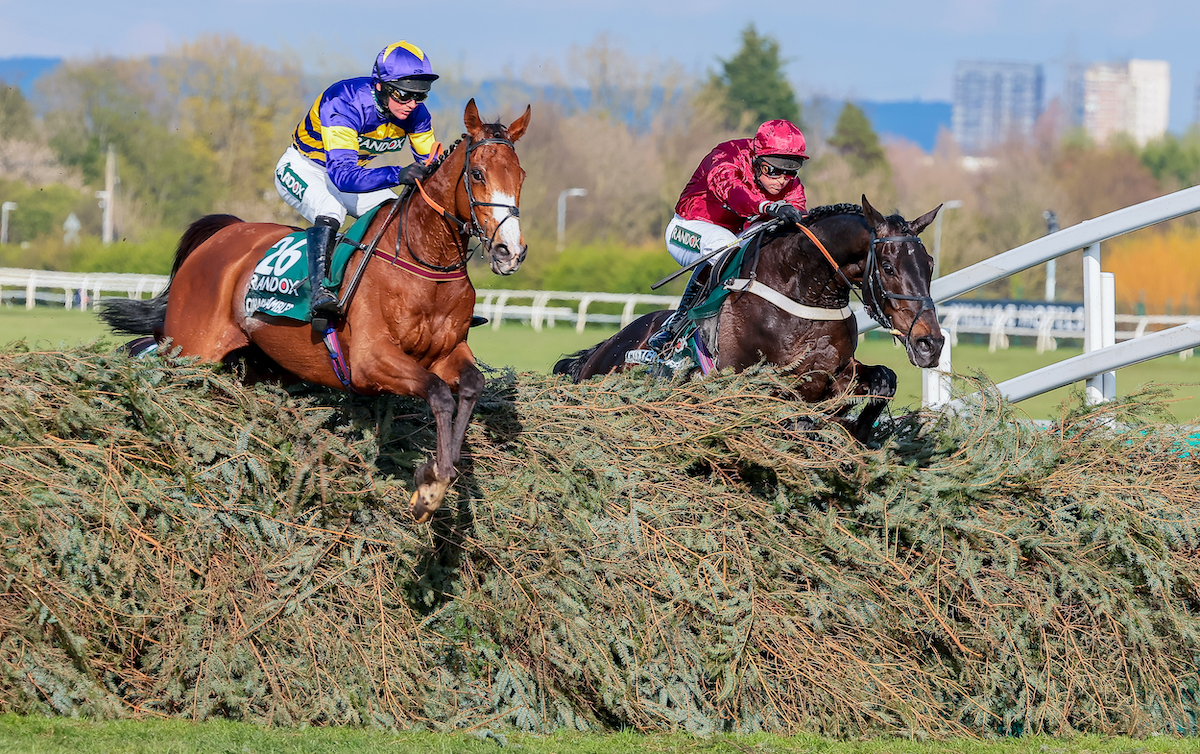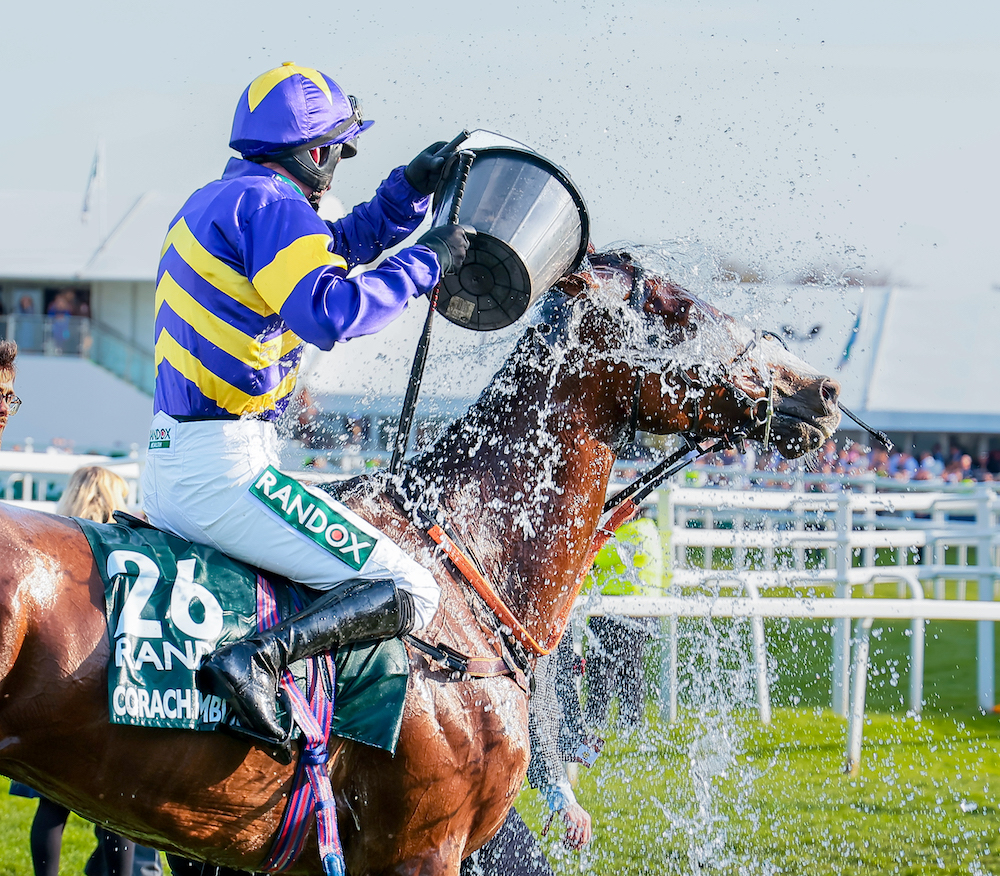
Despite its enduring popularity, the world’s most spectacular horse race is under scrutiny yet again after a high-profile demonstration from an animal-rights protest group disrupted this year’s event. Julian Muscat looks at matters arising
 Any suggestion that the disruption to the Randox Grand National was a one-off event were swept away on Saturday when protestors clad in the same pink T-shirts took similar action ahead of the Coral Scottish Grand National at Ayr.
Any suggestion that the disruption to the Randox Grand National was a one-off event were swept away on Saturday when protestors clad in the same pink T-shirts took similar action ahead of the Coral Scottish Grand National at Ayr.
Although neither intrusion was successful in bringing proceedings to a halt, the sport is now confronted by a stark reality. The same sinister threat hangs over any high-profile fixture, both over jumps and on the Flat. Nothing less than the total eradication of racing is the stated aim of Animal Rising, which organised both protests. It is beholden to those who run racing to secure its long-term future.
Yes, the stakes are that high. The activists maintain that the Grand National protest on April 14 was “just the beginning” of a campaign to “create a national conversation about our fractured connection with animals.”
And their cause was advanced when Hill Sixteen fell fatally at the first fence, although the horse's trainer, Sandy Thompson, insisted the 14-minute pre-race delay unsettled his horse and was largely responsible for his demise. Hill Sixteen was one of three horses to perish at the three-day Grand National fixture, a detail which featured prominently in national television news broadcasts.
Predictably, many professionals and media pundits dismissed the activists out of hand. There was a similarly tactless reaction to events in 1989, when two equine deaths at Becher’s Brook prompted the Aintree executive to scale back some of the fearsome Grand National fences. Josh Gifford (who trained 1981 winner Aldaniti) and Ginger McCain (of Red Rum fame) condemned the changes unequivocally, insisting the great race would be ruined as a spectacle.
 How wrong they were. Jump racing remains more vibrant than its Flat-racing counterpart in Britain and Ireland. And the Grand National’s enduring popularity, with its global television reach of 600 million viewers, is precisely what makes it such a magnet for protestors. It is no less popular now than it was before those casualty-induced changes.
How wrong they were. Jump racing remains more vibrant than its Flat-racing counterpart in Britain and Ireland. And the Grand National’s enduring popularity, with its global television reach of 600 million viewers, is precisely what makes it such a magnet for protestors. It is no less popular now than it was before those casualty-induced changes.
And the reason for it is down to the raft of alterations made to the race over the ensuing 24 years. The Grand National has moved with the times. If it hadn’t, it would be seen as an anachronism – had it survived at all.
Continue to evolve
To maintain its status as a sporting institution, the Grand National must continue to evolve. And to paraphrase Bob Dylan: the times they most certainly are a-changin’. One of the questions taxing society today is its relationship with animals, particularly in a sporting context.
Much of the debate is driven by younger generations whose only contact with animals has been through pets. There is precious little comprehension of non-domestic animals within our increasingly urbanised landscape, and this inevitably propagates the belief that subjugating them to our will is unacceptable.
 This presents a serious obstacle for racing’s supporters. They exult in the visceral thrill of watching horses in full flight, knowing very well that part of a Thoroughbred’s genetic makeup is a lust for competition.
This presents a serious obstacle for racing’s supporters. They exult in the visceral thrill of watching horses in full flight, knowing very well that part of a Thoroughbred’s genetic makeup is a lust for competition.
We know that the vast majority of racehorses actually enjoy trying to outrun one another. Many do not run any faster for coercion by the whip. They give their all voluntarily, entirely of their own accord.
Yet this concept is irreconcilable to those who have never had contact with horses, and who seem to believe that horses think in the way humans do. Our centuries-old connection with horses is a symbiotic relationship, rooted in the horse’s happiness to be ridden when it could so easily choose otherwise.
Any attempt to convert dissenters to racing’s cause is futile in the extreme. It was ever thus, and always will be. Equally, however, professionals who dismiss protesters’ concerns for their lack of understanding serve only to fan the flames.
Nor is it wise to recite the common mantra that racehorses are the most pampered animals on the planet who live in the equivalent of five-star hotels. The most pampered among bird species is the pheasant, which is housed in shelters, fed daily and then released – only to be shot in the name of sport. The fact that they are so cossetted does not justify their fate.
On the right lines
Racing’s response to perpetually changing times needs to be far more nuanced. It is on the right lines with its open-door polic y: welcoming the public into training establishments, showing allcomers that horses in training are happy to cooperate with what is asked of them.
y: welcoming the public into training establishments, showing allcomers that horses in training are happy to cooperate with what is asked of them.
Yet it is not in itself a panacea. It’s a statement that racing has nothing to hide; nothing to be ashamed of.
Racing should convey this message with a smile on its face, rather than a contemptuous frown at the impertinence of those who question it. In the absence of a cut-and-dried, easy-fix solution, it must open its collective arms, engage with its detractors and welcome the opportunity to justify itself.
Above all, however, it must play the long game. It is not about winning the argument, which it cannot hope to do. It is about not losing it.
This gives rise to the broader debate about the future of the Thoroughbred, which would all but cease to exist if racing was banned.
Racing is right to be concerned that protests over the Grand National amount to the thin edge of the wedge. The industry in Britain employs more than 84,000 people: can they all be engaged in a cruel pursuit? Are stable staff who chose their careers after becoming enchanted by horses – and who remain engaged despite the pitfalls – of a similar disposition?
Confidence and openness
Of course there an element of risk. There always will be, just as there is when wild ponies on fragile legs run loose on Dartmoor. It goes with the territory, yet younger generations bereft of animal contact are perfectly entitled to question racing’s validity. It is up to racing to respond with confidence and openness. The clothes-horse is sound. It just needs to be better dressed.
Interestingly, there is an inherent message within reservations expressed by young people about the Grand National. The evidence is only anecdotal, but a personal feeling is that fewer and fewer young people tune in to watch the great race these days. In which case racing needs to ask itself whether further modifications are warranted.
If tomorrow’s youth is equally disturbed by the sight of horses charging headlong towards the first fence at Aintree, the Grand National will ultimately lose its purchase unless it keeps reinventing itself.
The Grand National is more than just a horse race. It has a national identity that must be cherished over and beyond the technical challenge it asks of its participants. That is why constant vigilance is required for it to move with the times.
• View previous articles in the View from the Rail series
• Visit the Jockey Club's Aintree website
Japan’s Saudi Cup hero Panthalassa set for Sussex Stakes and Juddmonte International
The road less traveled: Wild On Ice takes New Mexico team all the way to Kentucky Derby
View the latest TRC Global Rankings for horses / jockeys / trainers / sires


